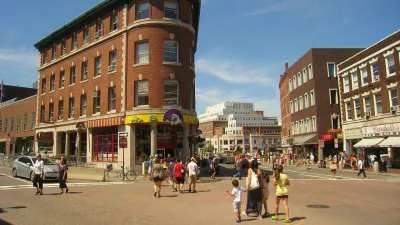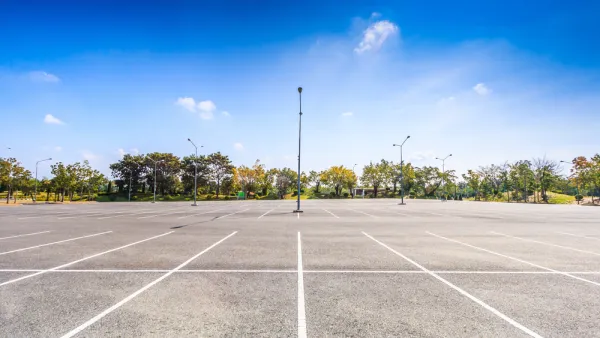Instead of density for density's sake (or for smart growth's sake), F. Kaid Benfield argues that the human scale is the key to walkable smart growth.

F. Kaid Benfield notices that advocacy groups such as Smart Growth America tend to select pictures of historic, mid-density, mixed-use districts when showing the benefits of walkable, "smart growth" cities. According to Benfield, "We use examples like these to illustrate our advocacy because they represent many of the qualities that newer suburban sprawl lacks but that we would like to see in more urban and suburban neighborhoods: walkability, density, and a diverse mix of uses, to name three."
"But I think there’s more going on than that….I submit that a huge reason why people feel attracted to and comfortable in historic neighborhoods is not just because of their familiarity and walkability but also because they present urban density at a human scale."
Rather than focusing just on density as a panacea for suburban ills, Benfield explains that some benefits of more compact living—such as reductions in impervious pavements (in the transportation network serving sprawl) and the use of cars (in the transportation network serving sprawl)—are found at the "lower end of the density spectrum": "the environmental gains begin to diminish at a density of about 20 homes per acre, and there is little additional benefit to these indicators as density increases beyond about 60 homes per acre."
Instead of density as the measure of smart growth and walkability success, or for density's sake, Benfield suggests that urbanists should consider the human scale as promoted by Jan Gehl as critical to the walkability of neighborhoods.
FULL STORY: Remembering the Human Scale in Walkable City Neighborhoods

Analysis: Cybertruck Fatality Rate Far Exceeds That of Ford Pinto
The Tesla Cybertruck was recalled seven times last year.

National Parks Layoffs Will Cause Communities to Lose Billions
Thousands of essential park workers were laid off this week, just before the busy spring break season.

Retro-silient?: America’s First “Eco-burb,” The Woodlands Turns 50
A master-planned community north of Houston offers lessons on green infrastructure and resilient design, but falls short of its founder’s lofty affordability and walkability goals.

Test News Post 1
This is a summary

Analysis: Cybertruck Fatality Rate Far Exceeds That of Ford Pinto
The Tesla Cybertruck was recalled seven times last year.

Test News Headline 46
Test for the image on the front page.
Urban Design for Planners 1: Software Tools
This six-course series explores essential urban design concepts using open source software and equips planners with the tools they need to participate fully in the urban design process.
Planning for Universal Design
Learn the tools for implementing Universal Design in planning regulations.
EMC Planning Group, Inc.
Planetizen
Planetizen
Mpact (formerly Rail~Volution)
Great Falls Development Authority, Inc.
HUDs Office of Policy Development and Research
NYU Wagner Graduate School of Public Service




























